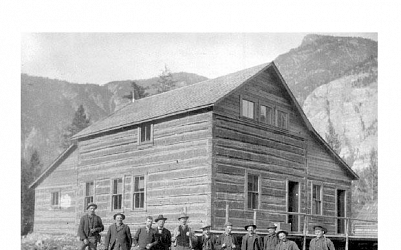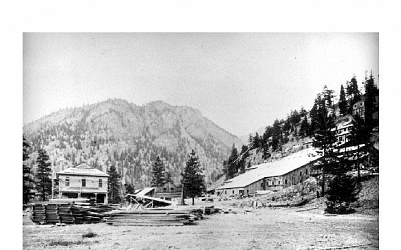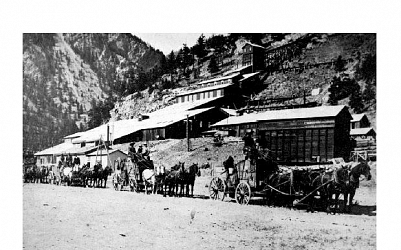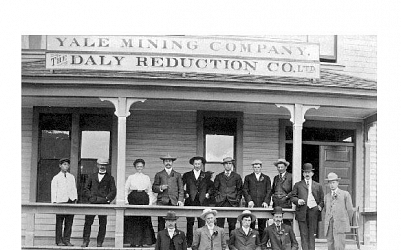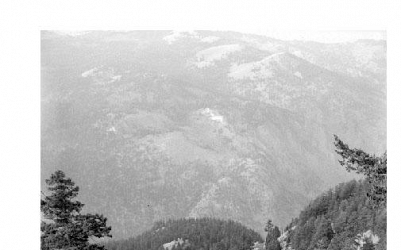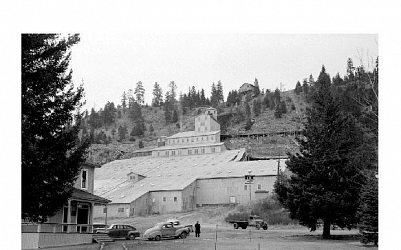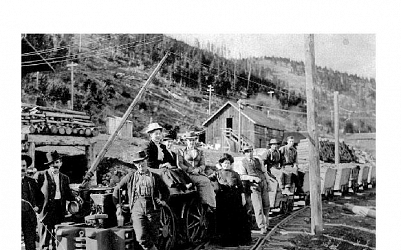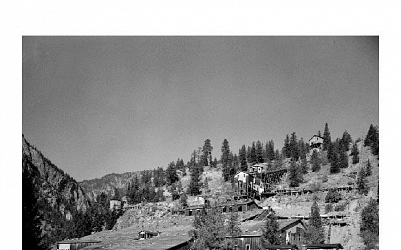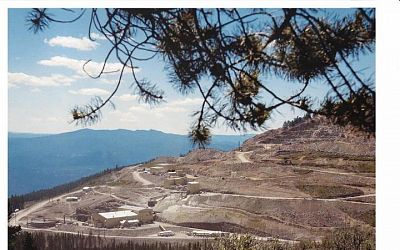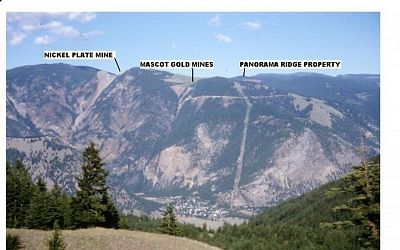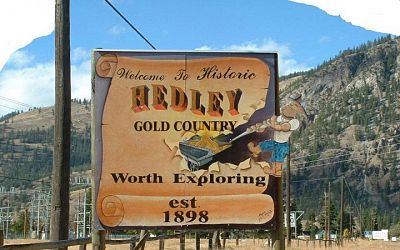Nickel Plate History
Placer gold was worked along the Similkameen River in the Hedley area during the 1860's. The gossans (oxidized mineral staining) on Nickel Plate mountain attracted the interest of prospectors and geologists with the first claims being located in 1894.
Ore of commercial promise was discovered in 1898 just below and east of the summit, when prospectors Wollaston and Arundel located the Nickel Plate claim to cover the one surface expression of the Nickel Plate system of orebodies. Samples found there way to Victoria where they were examined by geologic engineer M.K. Rodgers. Rodgers was employed by the Daly Reduction Company of Butte, Montana and delayed a trip to the Cassiar gold fields to make an examination of the Hedley district. What he saw prompted the optioning of the Nickel Plate claim and subsequent exploration and development. Several adits and development drifts and raises were excavated which led to a construction period between 1902 and 1904. A 4000 foot tramway was built to bring ore from the mountain top to the stamp mill in the valley below. The active production period under Daly control lasted from June, 1904, to August 1909. During this period the mill treated 167,000 tons at an average grade of 0.696 ounces gold per ton.
At this time ore appeared to be faulted off at depth, so when the Estate of Marcus Daly reorganized affairs, control of the mine shifted to the Hedley Gold Mining Company. Shortly after reorganization, more small but rich pockets of ore were discovered. Under the management of Gomer P. Jones, deeper drilling indicated that the ore zones persisted. Mill capacity was increased to 150 tons per day in 1911 and soon after to 200 tons per day. By 1921 the major incline, The Dickson and most stopes reached the claim boundary with the Mascot Fraction. Unable to reach agreement with the owner of the Mascot Fraction, Hedley Gold Mining activity focused on crosscutting around the Fraction to access the ore on the other side. By 1930, increased costs and lack of new ore forced closure of the Nickel Plate operations.
From 1930 to 1934, Paul Billingsley, a well-known American geologist, re-examined the geology of the Nickel Plate deposit and discovered new gold reserves sufficient enough to reopen the mine in 1934. Operated next by Kelowna Exploration Co. (1935-1951) and Kelowna Mines Hedley Ltd. (1951-1955), production at Nickel Plate continued until 1955, when it closed due to higher operating costs and lower gold grades. From 1936 to 1949, a significant portion of the Nickel Plate deposit (7,248,000 grams; 233,056 ounces) was mined from the Mascot Fraction (6 hectares) by Hedley Mascot Gold Mines Ltd. During the period of 1904 to 1955, the Nickel Plate deposit was mined as an underground mine, with gold grades ranging from 11.70 to 13.97 grams per tonne (0.376 to 0.449 ounces per ton).
Some intermittent exploration by outside groups took place after the 1955 closure. In 1967, the property was optioned by Giant Mascot Mines Limited, which carried out exploration in both the former producing areas of the mine as well as on the surface. Mascot Gold Mines Ltd. was formed by Giant Mascot to acquire the Nickel Plate property in 1971 and exploration resumed on the property in 1979. New management and financing during the 1984-85 period saw intensive surface and underground drilling which demonstrated the widespread nature of gold mineralization. Drilling completed in 1986 increased the open pit reserves to 8.3 million tons grading 0.14 ounces gold per ton. In 1987, Mascot Gold Mines Limited began mining the Nickel Plate deposit as an open pit operation. With a production of 25,248,113 grams gold (786,546 ounces), Homestake Canada Inc. took over Mascot Gold Mines and operated the open pit until October 1996. The Nickel Plate and associated orebodies have yielded over 2.5 million ounces of gold from both underground high grade and surface open pit production.

